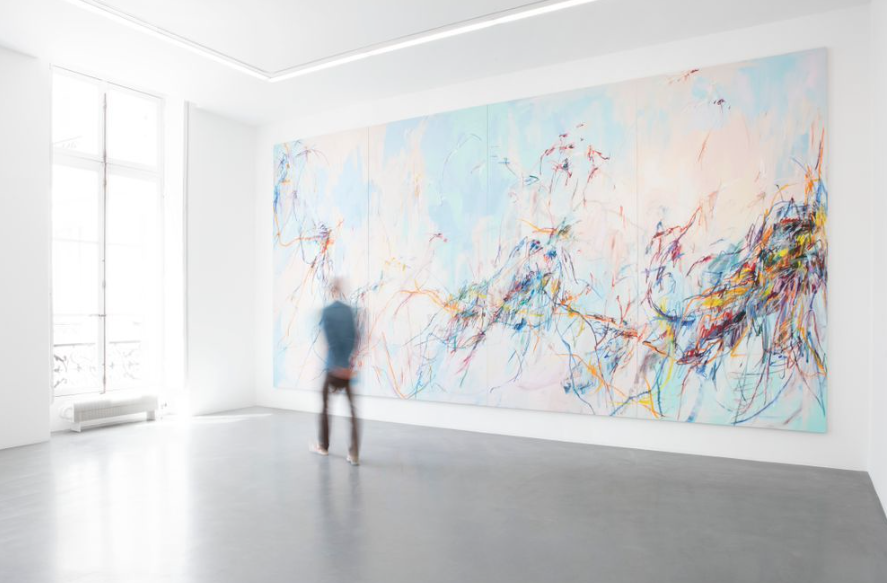WANG – PERROTIN
Perrotin Paris is pleased to present Xiyao Wang’s first exhibition at the gallery. The young, Berlin-based Chinese artist creates large- scale, immersive paintings in which gestural lines evoke echoes of landscapes, bodies, movements, thoughts. In the process, she develops a kind of hybrid abstract painting that combines various influences and inspirations: Taoism and post-structuralism, ancient Chinese pictorial traditions, bodywork, dance, martial arts, and the canon of Western art history. In her work, mythologies and the lyrical, hermetic painting of Cy Twombly merge with global mass culture, electronic music, with the networked, media-influenced thinking of millennials and Gen Z. Xiyao’s paintings explore inner visions, bodily perceptions, sensations, feelings, interrogating her East-West biography.
Xiyao, who studied with Werner Büttner and Anselm Reyle, is interested besides Twombly in German painters such as Günther Förg and Albert Oehlen. In the practice of all these painters the line plays a crucial role, through the “eccentric,” in some cases calligraphic ductus, the tension between reduced clarity and affect-laden chaos. But Xiyao Wang is not
concerned with picking up where lyrical abstraction and Abstract Expressionism left off, nor with a female remake of the German, male-dominated painting of the 1980s and 1990s. Rather, she deals with the question of how to create abstract and bold pictorial spaces today with similarly reduced means. The Crystalline Moon Palace, the title of her exhibition, borrowed from a series of paintings in the show, refers to an ancient Chinese myth around the moon goddess Chang’e. The latter was immortalized in her present form in a fourth-century poem.
Many of the depictions from different periods, such as the Buddhist frescoes from the cave temples near Dunhuang dating back to the fourth century, which the artist studied in detail, show flying female deities rising gracefully into the sky, surrounded by floating fabric and ribbons. The motif of the female figure flying weightlessly through the air, defying the laws of gravity and all physical limitations, entered global mass culture through kung fu and martial arts films such as Ang Lee’s Crouching Tiger, Hidden Dragon (2000). The myth of the moon princess Chang’e inspired not only the world-famous manga series Sailor Moon, but also the names of various Chinese moon probes.
The vision of flying, of intense physical and emotional states, of weightlessness, liberation, and dissolution of boundaries is the essential starting point for the construction of Xiyao Wang’s expressive pictorial spaces, reduced to color, gesture, and lines. Although nonrepresentational, they conjure up abstract landscapes, neural pathways, fragmented afterimages of flowering or dying plants, animal or human bodies, traces of dance, struggle, search and thought processes. The experience they convey is paradoxical: disembodied and transcendent, yet at the same time exhilaratingly sensual, material, almost tangible
